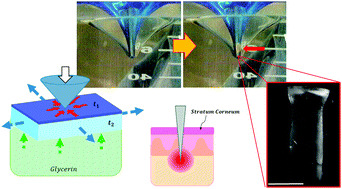Biomechanical fracture mechanics of composite layered skin-like materials
Abstract
Most protective biological tissues are structurally comprised of a stiff and thin outer layer on top of a soft underlying substrate. Examples include mammalian skin, fish scales, crustacean shells, and nut and seed shells. While these composite skin-like tissues are ubiquitous in nature, their mechanics of failure and what potential mechanical advantages their composite structures offer remains unclear. In this work, changes in the puncture mechanics of composite hyperelastic elastomers with differing non-dimensional layer thicknesses are explored. Puncture behavior of these membranes is measured for dull and sharp conical indenters. Membranes with a stiff outer layer of only 1% of the overall composite thickness exhibit a puncture energy comparable to membranes with a stiff outer layer approximately 20 times thicker. This puncture energy, scaled by its flexural capacity, achieves a local maximum when the top layer is approximately 1% of the total membrane, similar to the structure of numerous mammalian species. The mode of failure for these regimes is also investigated. In contrast with puncture directly beneath sharp tips caused by high stress concentrations, a new type of ‘coring’ type fracture emerges at large indentation depths, resulting from accumulated tensile strain energy along the sides of the divot as the membrane is deformed with a blunt indenter. These results could enhance the durability and robustness of stretchable materials used for products such as surgical gloves, packaging, and flexible electronics.



 Please wait while we load your content...
Please wait while we load your content...